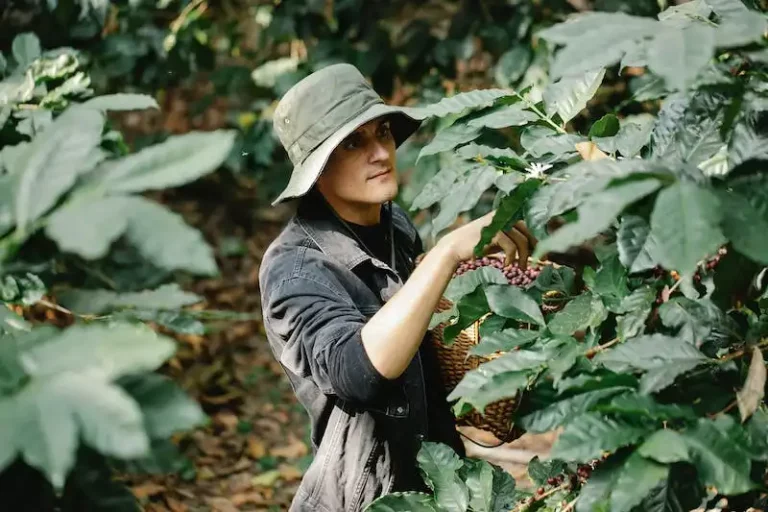Sweet William, scientifically known as Dianthus barbatus, is a flowering plant that belongs to the Caryophyllaceae family. This plant is native to Europe and Asia, and it is well-loved for its vibrant and eye-catching flowers. Sweet William offers a wide range of colors, including shades of red, pink, purple, and white, making it a popular choice for gardens and floral arrangements.
The name “Sweet William” is believed to have been derived from the English poet Thomas Wild’s poem “Sweet William’s Farewell to Black-Eyed Susan.” This poem tells the story of a sailor named Sweet William who takes leave of his lover, Black-Eyed Susan. The name stuck, and ever since, this flower has been called “Sweet William.”
Aside from its ornamental value, Sweet William has various uses. The flowers are edible and can be used to garnish salads, desserts, and cocktails. The blooms are also known to attract bees and butterflies, making them a delightful addition to any garden. Additionally, some cultivars of Sweet William are valued for their sweet scent and are often used in the production of perfumes and fragrances.
Sweet William is a relatively easy plant to grow, making it a popular choice for both experienced gardeners and beginners. This plant has a compact and bushy habit, growing to a height of around 12-24 inches (30-60 cm) with a spread of about 8-12 inches (20-30 cm). It prefers well-drained soils and can tolerate a wide range of soil types. Sweet William is also fairly resistant to diseases and pests, although it may occasionally be bothered by slugs and grasshoppers.
When it comes to care for Sweet William, deadheading is recommended to encourage continuous blooming. Deadheading involves removing spent flowers to promote the growth of new blooms. This process also helps to prevent the plant from self-seeding and spreading excessively. It is best to deadhead Sweet William regularly throughout the blooming season to keep the plant healthy and looking its best.
Fun Fact: Sweet William was named after Prince William, Duke of Cumberland, who played a significant role in the Battle of Culloden during the Jacobite rising in 1745. The flower was named in his honor to celebrate his victory.
Overall, Sweet William is a delightful and versatile flower that adds color and fragrance to any garden or floral arrangement. Whether it’s growing in the garden or adorning a vase, this flower never fails to impress with its beauty and charm. So why not give Sweet William a try and enjoy the beauty it brings to your home or garden?
Sweet William
Sweet William (Dianthus barbatus) is an ornamental plant known for its colorful blossoms and sweet-scented flowers. It is a popular choice for gardeners, as it adds a vibrant touch to any garden or home.
The flowers of Sweet William come in a variety of hues, including white, pink, red, and purple. They are grown for their vibrant petals and are often used as garnishes or in flower arrangements. The plant is also known for its attractive foliage, which includes thin, green leaves that add to its overall appeal.
Sweet William is an annual plant that grows well in well-drained soil. It is best planted in late spring or early summer and needs to be deadheaded to encourage continuous blooming. The plant has a clumping habit and can grow up to 1-2 feet in height.
While Sweet William is primarily grown for its ornamental value, it also has some culinary uses. The flowers can be used as garnishes for salads or desserts, and the seeds can be used to flavor certain recipes. However, it is important to note that the plant is poisonous if ingested, so caution should be exercised when using it in the kitchen.
For those interested in growing Sweet William, it is important to know that the plant prefers full sun or partial shade. It thrives in regions with mild to cool temperatures and is well-suited for gardens in the southeastern United States.
To grow Sweet William, start by preparing the soil. It should be well-drained and amended with organic matter. Sow the seeds directly into the soil, about 1/8 inch deep and spaced about 6 inches apart. Water the soil lightly and keep it moist until the seeds germinate. Once the plants have grown a few inches tall, thin them to allow for proper spacing.
Sweet William can also be planted in containers or pots for those with limited garden space. Make sure the containers have drainage holes to prevent waterlogging. Water the plants regularly and fertilize them every few weeks with a balanced, water-soluble fertilizer. Also, keep an eye out for slugs, as they can damage the foliage. If slug infestation occurs, there are various slug control methods available.
In conclusion, Sweet William is a beautiful and sweet-scented ornamental plant that adds a touch of color and fragrance to any garden or home. Its vibrant flowers and attractive foliage make it a popular choice for gardeners. While it has some culinary uses, caution should be exercised due to its poisonous nature. With proper care and attention, Sweet William can be an enjoyable addition to any garden or container.
Sources:
- University of Wisconsin-Madison: Sweet William – Dianthus barbatus
- Oregon State University: Genus: Dianthus
sweet William
Sweet William (Dianthus barbatus) is a well-known flowering plant in the carnation family. It is also commonly known as “willies” or “willying boys,” and it has a sweet-scented, colorful flower.
Sweet William is a fast-growing and highly ornamental plant that can reach a height of about 18 inches. It has a bushy habit and produces clusters of flowers in various colors, including pink, white, red, and purple. The flowers are often bi-colored or have contrasting color patterns.
Gardeners often select the best seeds or seedlings to ensure healthy and successful growing. It is important to deadhead the spent flowers regularly to promote continuous flowering. Sweet William can be grown from seeds or from nursery-grown plants.
For growing sweet William from seeds, it is recommended to start the seeds indoors in flats or pots before the last frost. Once the danger of frost has passed, they can be transplanted directly into the garden. Sweet William prefers well-drained soil and full sun to partial shade.
Sweet William is known to attract bees and butterflies, making it a great addition to pollinator gardens. However, it may also attract slugs and grasshoppers, which can be a nuisance. Regular watering is necessary to keep the soil moisture in check, and it is important to water at the base of the plant to avoid wetting the foliage.
Sweet William is a self-seeding plant, so it will often come back year after year in the same location. However, there may be some discrepancies in the flower color and habit of the new plants compared to their parent plants.
In conclusion, sweet William is an easy-to-grow and highly attractive flowering plant that adds a splash of color to any garden. Whether you grow it from seeds or buy nursery-grown plants, sweet William will surely brighten up your landscape. So why not give it a try and enjoy the beauty and sweet scent of this lovely plant?
Dianthus barbatus
Dianthus barbatus, commonly known as Sweet William, is an ornamental flowering plant that is usually grown as an annual. It belongs to the Dianthus family, which includes pinks and carnations. Sweet William is well-loved for its fragrant, colorful blossoms and is a popular choice for planting in gardens and borders.
When growing Sweet William, it is important to select a well-drained area that receives plenty of sunlight. The plants prefer a moderately fertile soil and should be watered regularly, but avoid overwatering as it can lead to root rot. Deadheading the spent blooms will encourage new flowers to bloom, keeping the plant looking fresh and healthy.
Sweet William plants grow to be about 12-24 inches tall, with thin, erect stalks that hold clusters of flowers. The flowers come in various colors, including white, pink, red, and purple, adding a vibrant splash of color to any garden.
It is worth noting that while Sweet William is generally safe, all parts of the plant are considered poisonous if ingested. It is best to keep them away from children and pets.
Sweet William seeds can be easily collected and packaged for the following year’s growing season. They can also be submitted to a library or seed exchange program to be shared with other gardeners. Since Sweet William is an annual plant, it will not come back on its own the next year, but you can save seed from the plants to grow the following year.
Dianthus barbatus is not just an ornamental plant; it also has culinary uses. The flowers have a sweet-scented flavor and can be used to garnish salads, desserts, and beverages. They can also be used to make a fragrant and colorful simple syrup or infused into vinegar. Just be sure to revise any recipe to make sure the flowers are safe for consumption and do not have any toxic properties.
Overall, growing Sweet William can be a rewarding effort. With its beautiful and fragrant flowers, it is a great addition to any garden or home. Whether planted in a flower border or used as a cut flower, Sweet William’s colorful blooms will bring joy and beauty throughout the growing season.
In Southeast California, Dianthus barbatus is commonly known as Augustus, while in the beach area, it is called Willie. Regardless of the name, these varieties offer the same vibrant colors and beautiful flowers. They thrive in the California climate and can be a quick and easy way to add color to your garden.
For the best results, select healthy seedlings or seeds and plant them in late spring or early summer. Make sure the seeds are planted just below the surface of the soil and keep them well-watered until they start to sprout. Once they are established, Sweet William plants are fairly low maintenance and will continue blooming for several weeks. With proper care and attention, you can enjoy the beauty of Sweet William for many years to come.
Please note that this article is for informational purposes only and should not be taken as medical or gardening advice. Always consult with a professional before ingesting or handling any plants that may cause allergies or adverse reactions.

